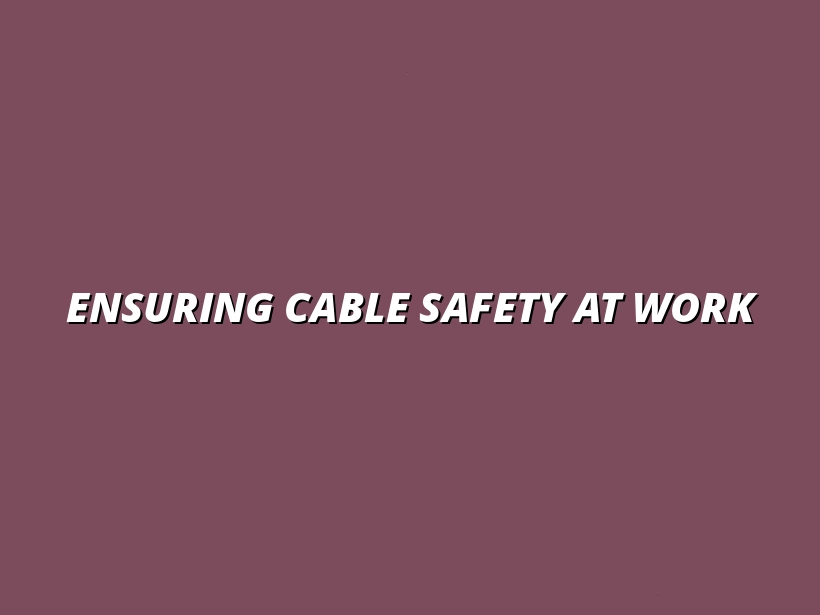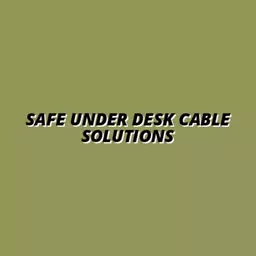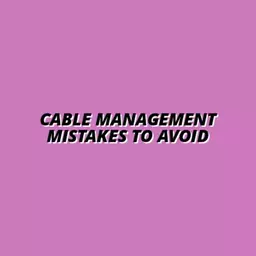
Ensuring Cable Safety at Work
In the bustling world of shared workspaces, a tripping hazard hides under your very feet. Did you know that disorganized cables can become a serious safety risk for everyone around? Proper cable management is essential, not just for maintaining a professional image, but also for ensuring a safe and productive environment. Let’s explore the vital lessons that emerge from understanding cable safety in these collaborative spaces.
What You Will Learn
- Tripping Hazards: Disorganized cables can lead to serious injuries and costly downtime by creating tripping hazards in high-traffic areas.
- Electrical Safety: Proper cable management reduces the risk of electrical shocks and fire hazards by ensuring cables are secured and maintained.
- Enhanced Productivity: A tidy workspace improves efficiency as it minimizes frustration and disruption when searching for equipment.
- Compliance with Regulations: Adhering to safety standards, such as those from OSHA, is crucial for minimizing liability and ensuring a safe work environment.
- Effective Safety Protocols: Implementing training and regular inspections establishes a culture of safety and awareness regarding cable management.
- Improved Aesthetics: A clutter-free workspace not only looks professional but also boosts employee morale, creating a more inviting atmosphere.
- Ergonomic Considerations: Optimizing cable routing enhances comfort and reduces the risk of workplace injuries by keeping cables out of foot traffic areas.
- Emergency Preparedness: Organized cables facilitate quick evacuations and ensure that pathways remain clear during emergencies.
Key Aspects of Cable Management for Safety and Productivity
Effective cable management is essential for ensuring safety and enhancing productivity in shared workspaces. Below are the critical factors that illustrate the importance of cable organization.
Tripping Hazards
Cables left unchecked can create serious safety risks, leading to injuries and costly downtime.
Electrical Safety
Loose or exposed cables can pose fire hazards, increasing the risk of electrical shocks.
Professional Image
A clutter-free workspace enhances your company’s appearance and promotes professionalism.
Impact on Productivity
Disorganized cables can disrupt workflow and increase frustration, hindering efficiency.
Understanding Cable Safety in Shared Workspaces
In today’s shared workspaces, keeping cables organized is not just about aesthetics; it’s a matter of safety. When cords are tangled or scattered, they can become tripping hazards, endangering everyone who walks through the area. This is especially true in busy environments where people are constantly moving. So, let’s dive into why effective cable management is crucial for safety and how it impacts productivity!
The Importance of Cable Management for Workplace Safety
Have you ever thought about how many people walk past your desk each day? In a shared workspace, it’s essential to keep cables neatly organized to prevent accidents. Poor cable management can lead to serious injuries caused by tripping over cords that cross pathways. To avoid these risks, let’s explore some key factors:
- Tripping Hazards: Cables left unchecked can create serious safety risks.
- Electrical Safety: Loose or exposed cables can pose fire hazards.
- Professional Image: A clutter-free workspace enhances your company’s appearance.
Identifying Risks: Tripping Hazards and Electrical Safety
Recognizing the potential hazards is the first step toward creating a safe workspace. Tripping over loose cables can lead not only to injuries but also to costly downtime for businesses. Additionally, having electrical wires exposed can increase the risk of electrical shocks or fires. By managing cables properly, you contribute to a safer environment for yourself and your colleagues. For more insights, check out this article on organizing cables for safer workspaces.
Impact of Poor Cable Management on Productivity and Aesthetics
When cables are disorganized, it’s not just a safety issue; it can also affect productivity. Imagine trying to find the right charger or power source amid a chaotic mess! This disarray can disrupt workflow and increase frustration. Conversely, a well-organized workspace promotes efficiency and creates a more inviting atmosphere for everyone involved. For additional help, consider desk lighting cable management tips to optimize your workspace.
💡 Want to master under-desk cable trays? Start with our foundational guide to all things cable management. 👉 Read the Cable Management 101 Guide
Office Safety Protocols for Cable Management
Implementing safety protocols is essential for fostering a culture of safety in shared workspaces. Establishing clear guidelines ensures that everyone knows how to handle cables safely and responsibly. Let’s look at some important protocols to consider:
- Training and Awareness: Educate staff on the importance of cable management.
- Regular Inspections: Conduct safety checks to identify and address potential hazards.
- Emergency Procedures: Develop evacuation plans that consider cable placement.
Integrating Compliance Standards and OSHA Regulations
Compliance with safety standards, like those from OSHA, is crucial. These regulations guide businesses to implement safe practices regarding cable management. Neglecting these standards can result in penalties and increased liability risks. By staying informed about compliance requirements, you create a safer workspace for everyone!
Establishing Safety Checklists and Risk Assessments
Creating safety checklists and conducting risk assessments is a proactive way to maintain a safe work environment. By regularly evaluating your workspace for hazards, you can quickly address any cable management issues before they escalate. This not only ensures safety but also fosters a culture of responsibility among all team members. You might also consider under desk cable safety tips for more information.
Quick Summary
Here's a brief recap of the key points discussed so far:
- Tripping Hazards: Disorganized cables can create serious risks that impact safety.
- Productivity Impact: A clutter-free workspace promotes efficiency and reduces frustration.
- Compliance Matters: Adhering to safety standards like OSHA is essential for minimizing liability.
Enhancing Workspace Aesthetics and Efficiency through Cable Management
When it comes to creating a productive and inviting workspace, the role of cable management can't be overlooked. It’s not just about safety; it’s also about making your workspace look tidy and feel more enjoyable to work in. At Under-Desk Tray Hub, I’ve seen how a little organization can go a long way in transforming chaotic areas into clean, functional environments!
One key aspect here is balancing safety with visual tidiness. When cables are neatly organized, it not only minimizes tripping hazards but also enhances the overall appearance of your workspace. Think about your own experience: a cluttered desk can feel overwhelming, while an organized one invites creativity and productivity.
Balancing Safety with Visual Tidiness
To maintain a tidy work environment, consider these effective strategies:
- Utilize cable trays or raceways to hide unsightly cords beneath desks.
- Incorporate cable sleeves or clips to bundle wires together.
- Regularly declutter your workspace to avoid buildup of unnecessary items.
Beyond safety, a well-organized workspace can have a remarkable impact on employee morale. When everyone feels comfortable and focused, they’re more likely to be productive. I’ve noticed in many office settings that a clean aesthetic fosters a more positive atmosphere!
Additionally, when employees can find their tools and technology easily, frustration diminishes. Imagine walking into a workspace where everything is in its place—it feels good, right? For additional insights, consider the benefits of safe cable tray practices.
Workspace Ergonomics and Cable Management
Now, let’s dive into how cable management intersects with ergonomics. Designing workstations with optimal cable routing can significantly improve comfort and safety. Here are some tips to enhance your workspace ergonomics:
- Position power strips and outlets within easy reach to avoid awkward stretching.
- Route cables in a way that prevents them from obstructing foot traffic.
- Ensure that monitors and devices are at eye level to reduce strain on the neck.
Assessing ergonomics not only promotes comfort but also helps prevent workplace injuries. Remember, investing time in organizing cables is an investment in your team’s health and productivity!
Frequently Asked Questions on Cable Safety in Shared Workspaces
This section will address common concerns regarding cable management in shared spaces. It's important to have answers readily available, especially when sharing work environments with others.
Common Concerns and Solutions
One frequent question I hear is: How can I ensure cable safety in a high-traffic area? Here are some simple strategies to consider:
- Use floor cord covers to prevent trips.
- Secure loose cables to desks using adhesive clips.
- Regularly check for frayed cords and replace them as needed.
Another common inquiry is about maintenance: What are the best practices for regular maintenance of cable management? Keeping your workspace organized doesn’t stop at installation; it requires ongoing attention!
- Schedule monthly checks to tidy up and reorganize cables.
- Encourage team members to report any cable issues promptly.
- Utilize cable tags for easy identification during maintenance.
Emergency Preparedness and Cable Management
It's crucial to consider how cable organization plays a role in emergency preparedness. For instance: How effective cable organization supports rapid evacuation? By keeping pathways clear and cables secured, you ensure that all individuals can exit swiftly in case of an emergency.
Moreover, planning for cable safety during emergency situations includes:
- Regularly reviewing cable layouts to ensure they don’t obstruct exits.
- Conducting drills that include scenarios involving cable hazards.
In short, prioritizing cable management not only enhances aesthetics but also contributes significantly to a safer and more efficient workspace.
Recap of Key Points
Here is a quick recap of the important points discussed in the article:
- Tripping Hazards: Disorganized cables can create significant tripping risks in shared workspaces.
- Electrical Safety: Loose or exposed cables may lead to electrical hazards and fires.
- Professional Image: A tidy workspace enhances the company’s image and promotes a positive environment.
- Regular Inspections: Conducting regular safety checks helps identify potential hazards proactively.
- Training and Awareness: Educating employees about cable management is essential for maintaining safety protocols.
- Ergonomics: Proper cable routing enhances comfort and reduces the risk of workplace injuries.
- Emergency Preparedness: Keeping pathways clear facilitates rapid evacuation during emergencies.




